Determinedly green hills, tumbling stone walls, beaten exposed rock and indispensable pubs – a short break in the Peak District was just what I needed last month. The heather was beginning to put out buds, the sun managed to fight through the clouds sporadically, and the sheep were mostly yet to be sheared.

When I was little I always hated seeing wool lying on the ground in fields and caught on barbed wire. It seemed like a waste. I always wanted to collect it, hoarder that I am. Parents, relations, whoever was forcing me out on a walk, never let me. What would I do with it? I couldn’t use it for anything, and it was smelly and dirty.
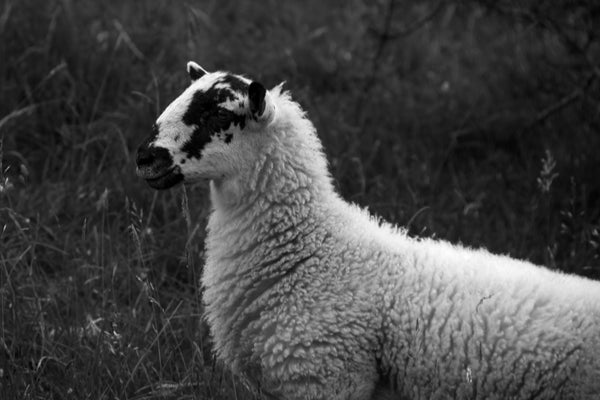
Oh, how different things are now. The wool is still smelly and dirty, still caught in the thistles like forgotten little drifts of snow. But now I know how to clean it, to card and spin it, to make it into something useful. And there’s nothing to stop me gathering as much as I like! (Except for the limited size of the designated wool pocket in the backpack…)
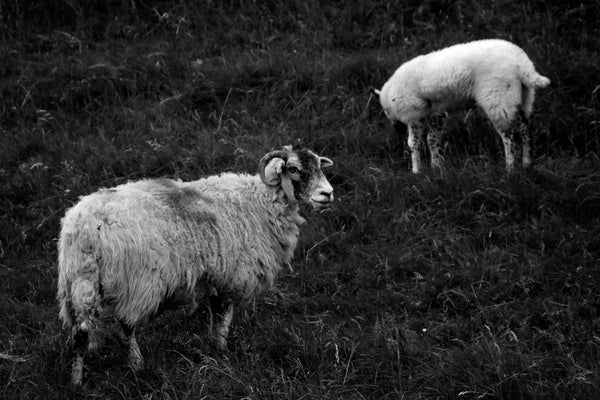
So our hiking trip was punctuated by meandering runs towards little white patches that looked promising. A lot of the wool had far too much kemp (brittle, weak hairs that do not take dye) for it to be useable. Some (as in the photo below) was far too coarse and hair-like. But some of the wool I found was beautiful. Some snowy white, long and lustrous, some distinctive Bluefaced Leicester finely crimped locks. I kept these, as well as some slightly shorter wool with kemp in it for some texture. Though the kemp adds no strength to yarn, in small amounts it can add a tweedy effect.

Carefully stashed in my bag and brought home, the wool first needed cleaning before it could be made into yarn. I picked out as much grass, moss and leaf as possible, and, as there was only a small amount, washed it in a single batch in the sink. First I used hot water with Unicorn Power Scour, which came recommended by everyone I know who had used it, then rinsed with hot water. When working with whole fleeces it's often necessary to wash and rinse another time, but I had selected cleaner wool when gathering, and the small quantity helped.

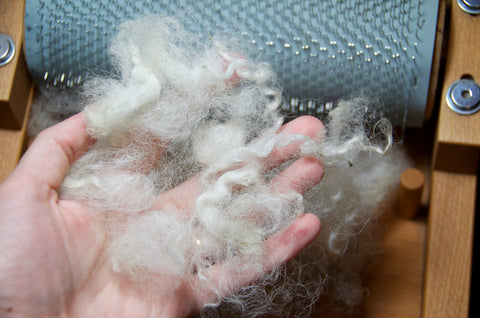
Clean wool is ready for carding; the process that makes the wool into a batt that can be spun into yarn. This can be done with two paddle-like hand carders, or a drum carder, which can be small like mine, or an enormous industrial setup. Carding makes a fluffy, airy yarn; as opposed to combing, which is used for long fibres and makes a smoother, sleeker yarn.
I wanted to blend this wool quite well for a consistent texture. To ensure this, I pick apart the clumps and locks of wool, separating them with my fingers. This makes less work for the carder, and means the fibre won't get dragged and broken by the teeth. I tried to ensure a good mix of long, defined locks and shorter wool with more kemp in each batch I fed into the carder.

Turning the handle on the side of the carder feeds the wool under the smaller front drum. It is then pulled up between the two drums, where the teeth separate the fibres. Any waste, including vegetable matter (small pieces of straw, leaves etc.), too-short and clumped sections of wool mostly ends up on the front drum, while on the back drum the useful fibre gradually builds into a batt.
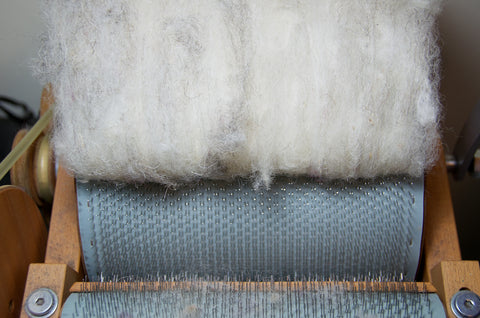
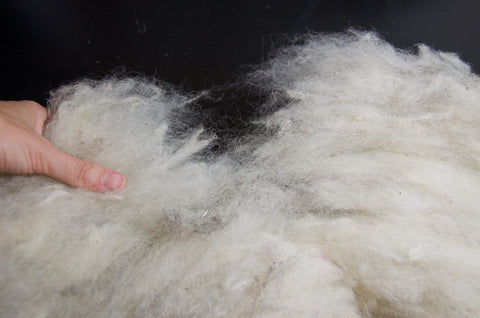
When the large drum is full, the batt is peeled upwards off the teeth, forming a large rectangle of wool. At this stage batts are useable, and can be spun into yarn or felted. However, I mixed different types of wool, and some fibres have not fully separated and blended, so I tear the two batts I made into smaller pieces and feed them through the carder again. I do this twice to ensure the batts have a relatively uniform texture and composition.
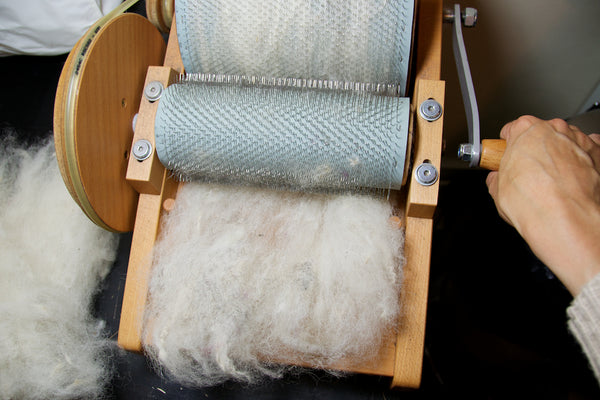
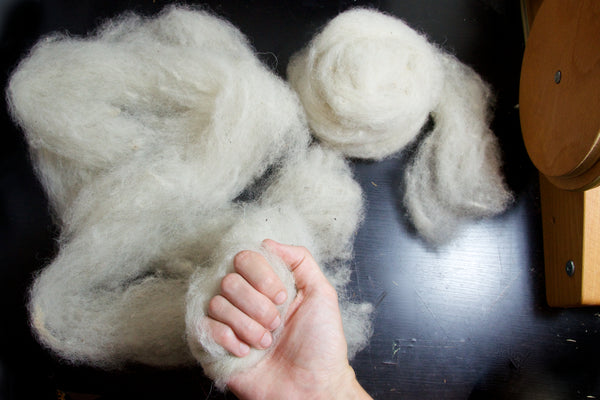
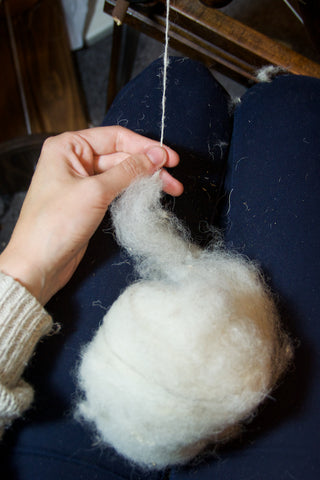
When the batts are blended to the extent I'm happy with, I take each one and roll it tightly, edge to edge like a spring roll. This leaves me with a large sausage of wool.
The batt can be rolled end to end, or edge to edge. Because of the way the fibres are pulled onto the drum carder, rolling it end to end – making a shorter, fatter sausage – can make a plumper, fluffier yarn. When spinning from a batt rolled this way, more of the fibres are aligned perpendicular to the length of the yarn, trapping more air within the yarn.
The rolled-up batt can be spun from directly, but I like to 'pre-draft' my fibre, gently pulling the batt in small sections along its length to make the sausage longer and thinner, until I can wrap it round my hand to make a ball I can spin from.
I decided to spin this wool into a roughly aran-weight yarn – probably my favourite yarn weight! I think it could have made a nice chunky yarn, but I wanted to get a little more length out of the small quantity of wool.
When creating yarn I like to have an idea of what it will eventually become: will it be knitted into a scarf? Or woven into a wall hanging? These things all affect the choice of fibre, the way I process it, and how I will then spin it.

In this case, though, I made the yarn for the sake of creating something from the wool, so followed instinct for what felt right. Sometimes, if you feel and listen, the fibre will tell you what it wants to do. 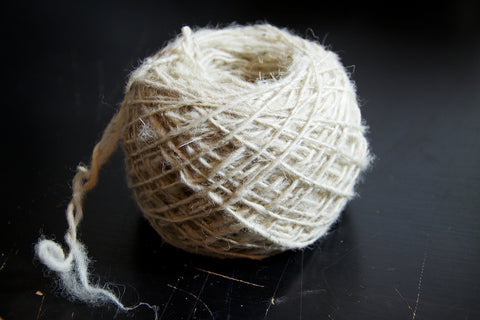
Some fibre will ask to be spun wild, chunky and textured, and some wants to be fine and consistent. I often ignore the latter! We usually reach a compromise.

This wool was happy with being spun with a medium twist, in as consistent an aran weight as I have the patience to spin. I wouldn't spin yarn if I wanted to make it look like it had come out of a mill! I hold those who can and do in extremely high regard, but I want my hand-spun yarn to have the human touch.
A lot of kemp distributed itself across my lap as I was spinning – one of the many reasons you don't want too much of it in your wool!
Once I have spun all the wool into a 'single' – yarn that is spun, but not plied – I wind it from the bobbin into a centre-pull ball that allows access to both ends.
The two ends are joined, then spun together in the opposite direction to the single. This makes a two-ply yarn, adding strength and durability.
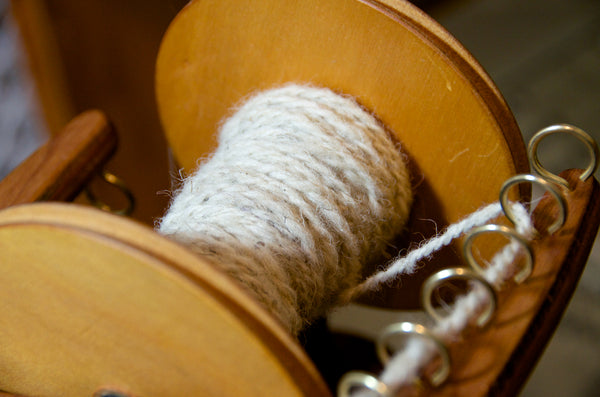
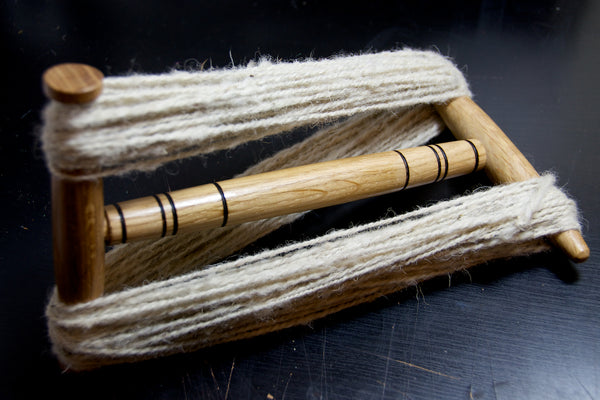

The plied yarn is then wound onto a niddy-noddy (by far my favourite word) to make a skein. In this form the yarn can be washed and, if desired, dyed. I like to beat up my hand-spun a little when washing it. The hot water and friction set the twist and make the fibres stick together slightly, which helps prevent the yarn from splitting or unravelling.
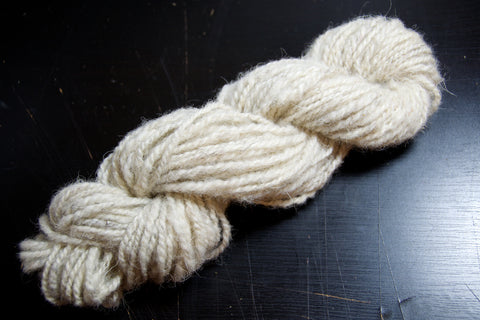
After hanging up to dry overnight, my lovely scavenged yarn is finished and ready to use! It isn't soft yarn, unsurprisingly. But it has bags of character, with wild bits of kemp and tweedy flecks.
I don't have enough for a large project, so will save it to use in something special, and will use it alongside other yarn to add meaning and a story to it. The stories are – after all – why we create things with our hands, are they not?
Do you have yarn with a background? I'd love you to leave a comment about those magical materials and projects that mean something to you!
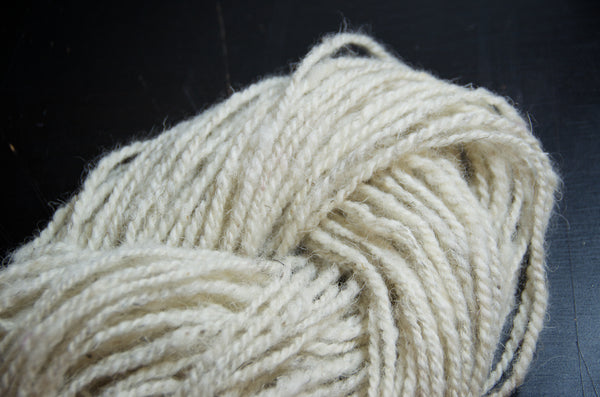
![Cosy knitting patterns, scrap yarn and clearing WIPs [Marina Skua Ep 77]](http://marinaskua.com/cdn/shop/articles/Marina-Skua-Knitting-Podcast-Blog-Episode-77_0eabc090-51df-4e08-9582-e4f1ac38d42c.jpg?v=1766326347&width=1920)
![Quickbeam cardigan, silly slippers and a finished Pediment in hand-spun yarn [Marina Skua Ep 76]](http://marinaskua.com/cdn/shop/articles/Felted-Slippers-Knitting-Project-Marina-Skua-Knitting-Podcast-Blog_6b7a6b1e-b95a-488f-8915-627a7a87ef4b.jpg?v=1765099041&width=1920)







